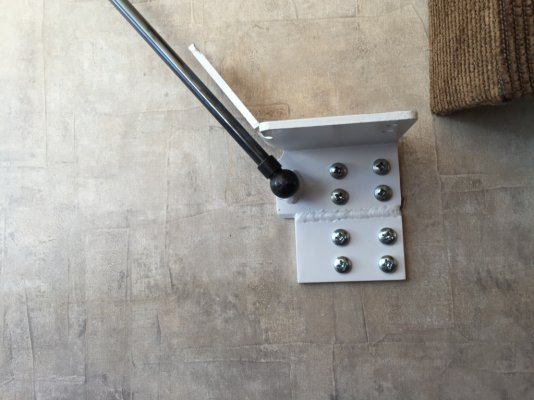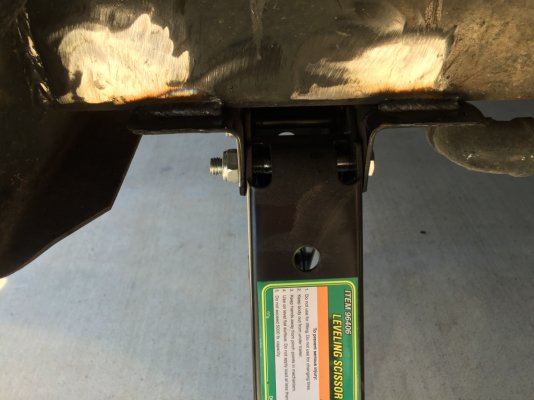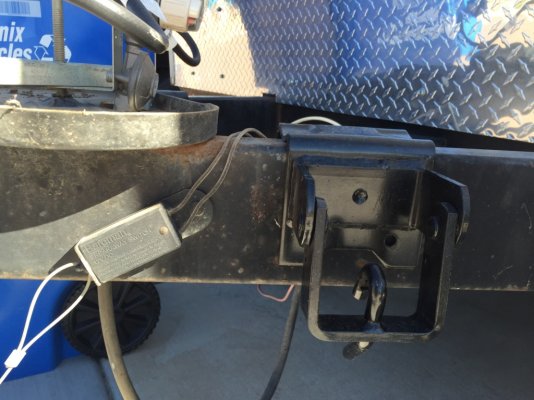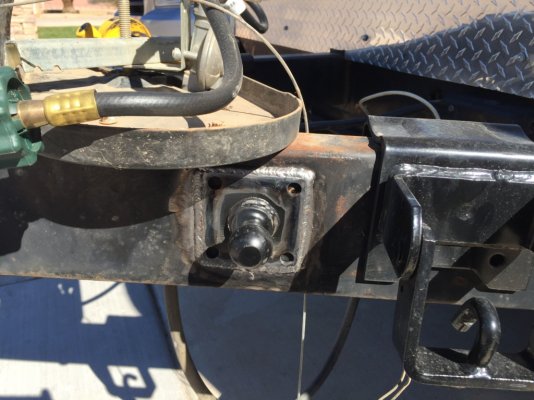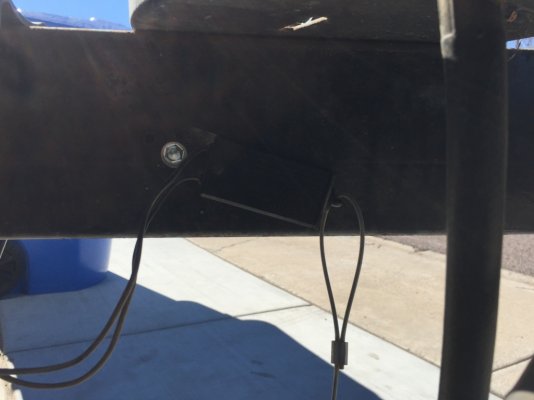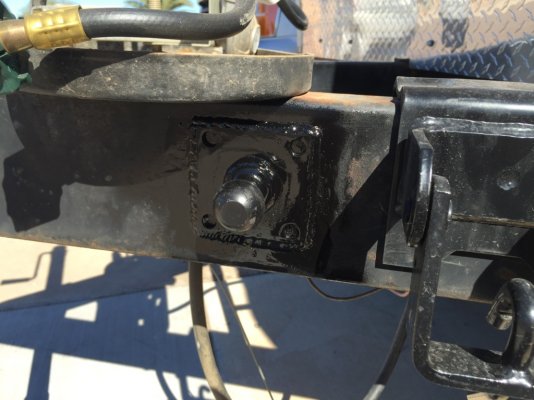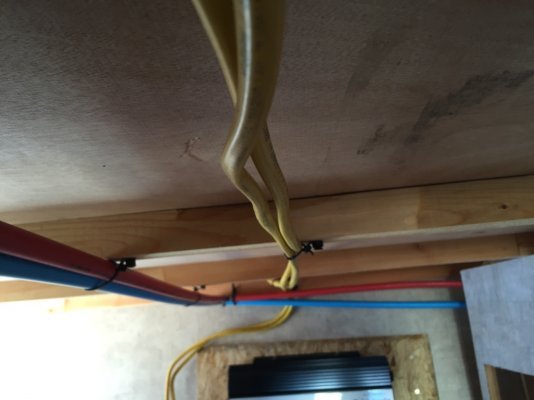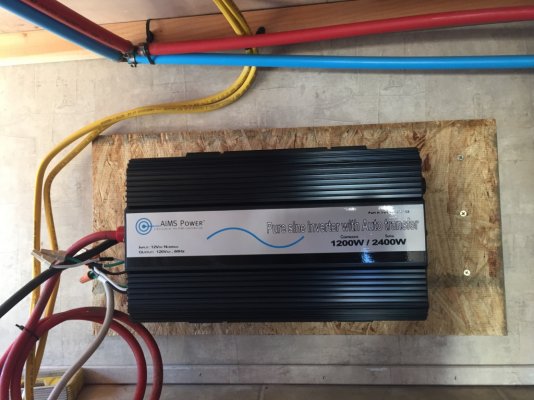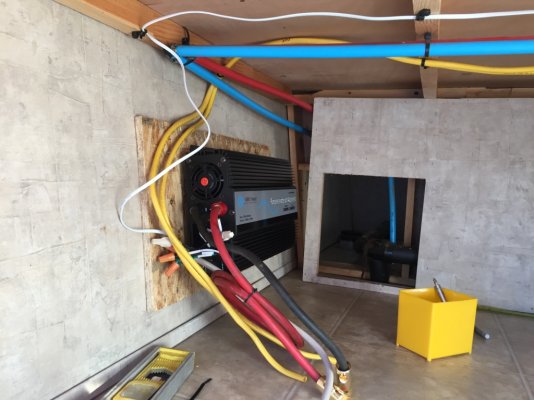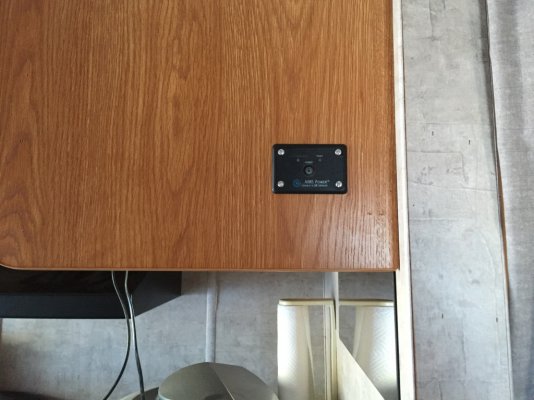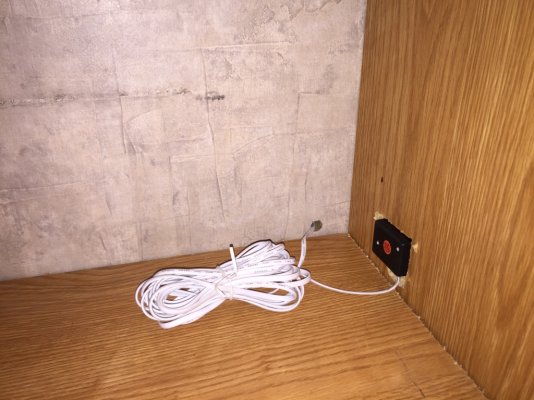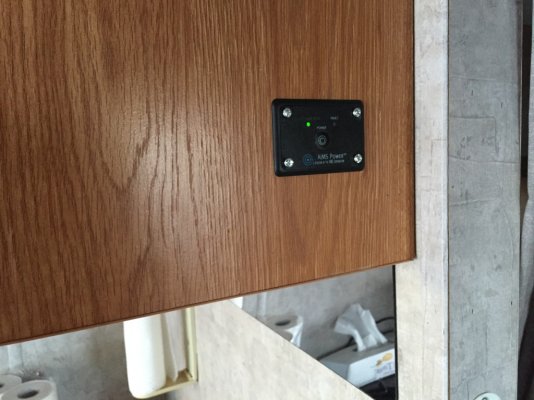This is how I think I've decided to run the wire. After reading the AIMS install guide, esp the bits about the unit potentially over heating, and the length of the 12V wire run.
If I put the inverter in the compartment behind the converter, I'd need a 12' run of 12V from the batteries, and would need to install an active vent fan on the compartment panel so the inverter and converter do not generate a bunch of heat together. I would also have to run the 12V wires under the cabin since the bathroom is in between the battery bank and the inverter. This would however, make for an easy 110V wire run.
BUT as the installation instructions mention, since 110V is a much higher voltage than 12V, it is better suited for lengthy runs.
So if instead, I mount the inverter extremely close to the battery bank, in fact on the opposite side of the wall in the crawl space, I can do so with only 2' or so of 12V wire and I can route the 110V through the cabin, entirely in the crawl spaces.
What I'll do is open the electric box where the thick 30 amp cable from shore converts to 3 pull romex, I'll disconnect that union, connect new romex to both and make 2 runs to the inverter.
